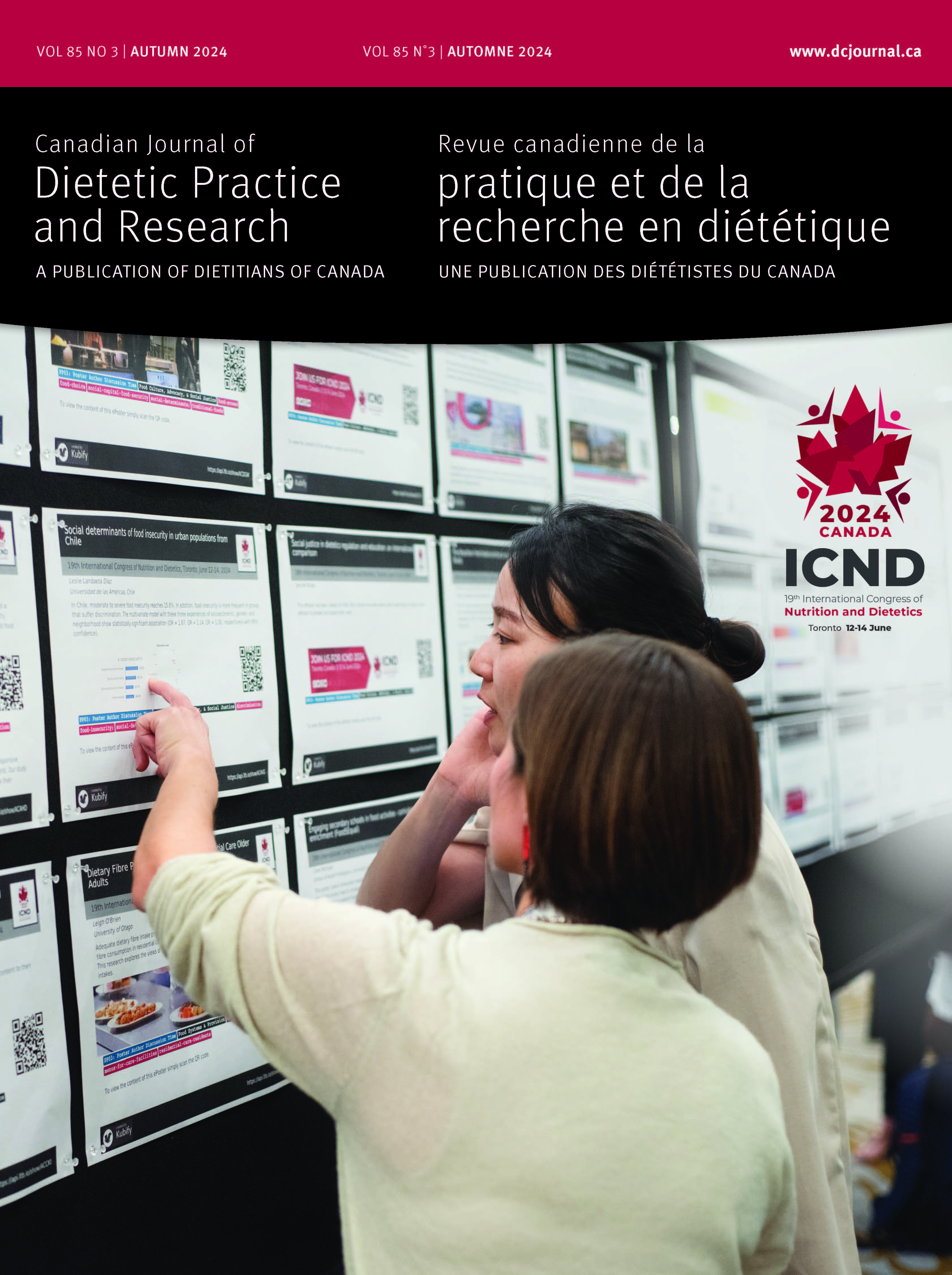Abstract
Purpose: Our understanding of the influence of sugar intake on anthropometrics among young children is limited. Most existing research is cross-sectional and has focused on sugar-sweetened beverages. The study objective was to investigate longitudinal associations between young children’s total, free, and added sugar intake from all food sources at baseline with anthropometric measures at baseline and 18 months.
Methods: The Guelph Family Health Study (GFHS) is an ongoing randomized controlled trial and a family-based health promotion study. Food records and anthropometric data were collected at baseline (n = 109, 55 males; 3.7 ± 1.1 y, mean ± SD) and 18 months (n = 109, 55 males; 5.1 ± 1.1 y) of the GFHS pilots. Associations between sugar intakes and anthropometrics were estimated using linear regression models with generalized estimating equations adjusted for age, sex, household income, and intervention status.
Results: Total sugar intake was inversely associated with body weight at 18 months (P = 0.01). There was no effect of time on any other associations between total, free, and added sugar intakes and anthropometrics.
Conclusions: Early life dietary sugar intakes may not relate to anthropometric measures in the short term. Further investigation into potential associations between dietary sugar intakes and anthropometric variables over longer time periods is warranted.
Résumé
Objectif. Notre compréhension de l’influence de la consommation de sucre sur le profil anthropométrique des jeunes enfants est limitée. La plupart des études existantes sont transversales et portent sur les boissons sucrées. L’objectif de cette étude était d’explorer les associations longitudinales entre la consommation par les jeunes enfants de sucres totaux, libres et ajoutés provenant de toutes sources alimentaires au début de l’étude et les mesures anthropométriques au début de l’étude et après 18 mois.
Méthodes. La Guelph Family Health Study (GFHS) est un essai contrôlé randomisé en cours et une étude de promotion de la santé suivant des familles. Des journaux alimentaires et des données anthropométriques ont été recueillis au début de l’étude (n = 109, 55 garçons; 3,7 ± 1,1 ans, moyenne ± écart-type) et 18 mois (n = 109, 55 garçons; 5,1 ± 1,1 ans) après le début des projets pilotes de la GFHS. Les associations entre la consommation de sucre et les données anthropométriques ont été estimées à l’aide de modèles de régression linéaire avec des équations d’estimation généralisées ajustées en fonction de l’âge, du sexe, du revenu du ménage et du statut de l’intervention.
Résultats. La consommation totale de sucre était inversement associée au poids corporel après 18 mois (P = 0,01). Le temps n’avait d’effet sur aucune autre association entre la consommation de sucres totaux, libres et ajoutés et les données anthropométriques.
Conclusions. La consommation de sucres alimentaires au début de la vie pourrait ne pas être liée aux mesures anthropométriques à court terme. D’autres études sur les associations potentielles entre la consommation de sucres alimentaires et les variables anthropométriques sur des périodes plus longues sont justifiées.



